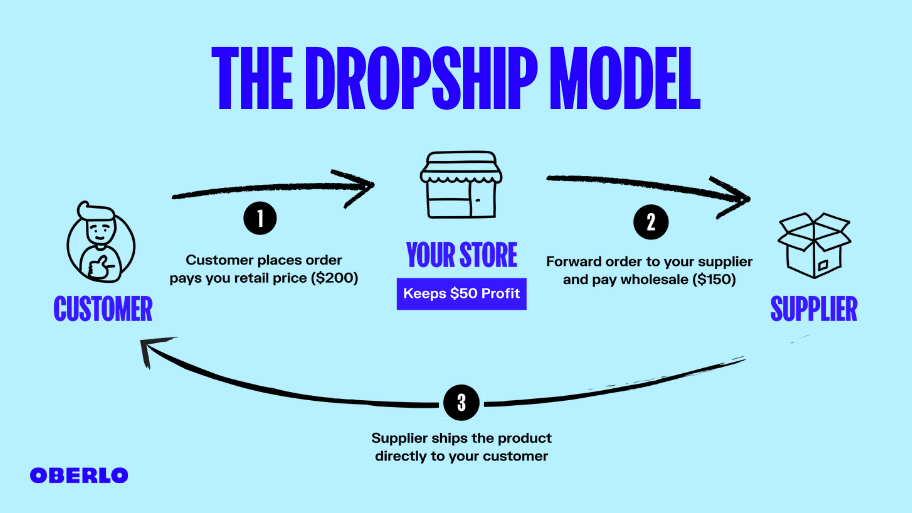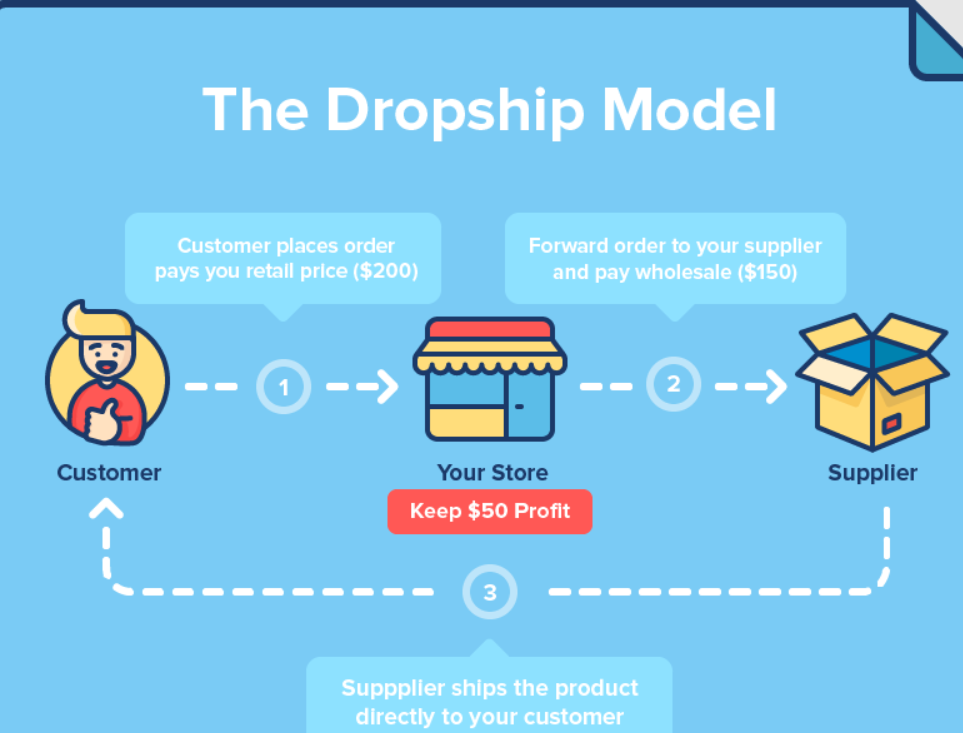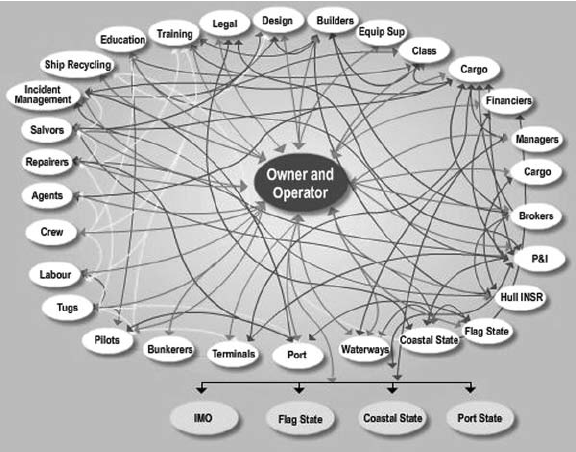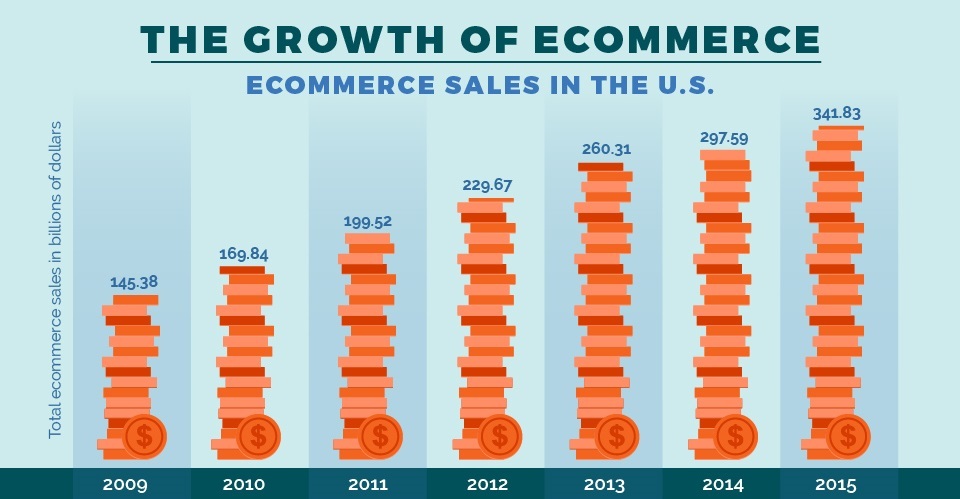The digital realm has witnessed a monumental surge in e-commerce activities in the past decade. According to Statista, global e-commerce sales in 2019 amounted to 3.53 trillion US dollars and are expected to grow to 6.54 trillion US dollars by 2022. This meteoric rise is not just attributed to the traditional online selling mechanisms but also to the advent of innovative business models tailor-made for the digital age.

Amidst these revolutionary models, drop shipping stands out prominently. It’s not just a buzzword; it’s a transformative approach that has reshaped the very structure of online selling. For budding entrepreneurs, drop-shipping offers a low-barrier entry into the e-commerce space without the need for massive upfront investments in inventory. It ingeniously flips the script: instead of buying products first and then selling, sellers first list products, make sales and then purchase the product from a third-party supplier who ships it directly to the customer.

Such a paradigm shift in the retail framework underscores the potential of drop-shipping and its capacity to redefine the norms of online selling. But like any business model, it comes with its intricacies, which we will delve into in this comprehensive guide.
The Drop-shipping Model Explained
For many, the word ‘drop-shipping' might seem like jargon or just another fleeting trend in the vast ocean of e-commerce. However, drop-shipping is a simplistic yet powerful retail model that's been steadily gaining traction. Drop-shipping is a retail fulfillment method where a store doesn't keep the products it sells in stock. Instead, when a store sells a product using the drop-shipping model, it purchases the item from a third party — typically a manufacturer or wholesaler — and has it shipped directly to the customer. This means that the seller doesn't handle the product directly.
The Drop-shipping Cycle
Drop-shipping can be best visualized through its operational cycle. Here’s a step-by-step flowchart detailing the journey from a customer placing an order to the product being delivered to their doorstep:
- 1. Customer places an order on the retailer's website.
- 2. Retailer automatically or manually forwards the order and customer details to the drop-ship supplier.
- 3. Drop-ship supplier packages and ship the order directly to the customer on the retailer's behalf.
- 4. Retailer pays the wholesale price to the drop-ship supplier.
- 5. Customer receives the product and interacts only with the retailer.
Why Drop-shipping Appeals to New Entrepreneurs
Drop-shipping has garnered immense popularity, especially among budding entrepreneurs, and for valid reasons:
- Minimal Capital Requirement: One of the biggest barriers to starting a retail business is the initial investment required to purchase inventory. Drop-shipping eradicates this barrier, allowing entrepreneurs to kick-start their venture without hefty upfront expenses.
- Flexibility in Product Offerings: Retailers can easily expand their product catalog without any substantial risks or inventory costs. You can quickly switch your focus if a product doesn't sell as anticipated.
- Reduced Operational Hazards: Storing, packaging, and shipping are the responsibilities of the supplier. This reduces the operational workload for retailers and minimizes potential hazards associated with stock handling.
- Location Independence: Entrepreneurs can manage their drop-shipping business anywhere with a reliable internet connection.
However, while drop-shipping offers several advantages, being cognizant of its challenges is essential. Factors like finding reliable suppliers, ensuring product quality, and managing customer service expectations are critical. Yet, with the right strategies and a keen understanding of the model, entrepreneurs can leverage drop-shipping to build successful e-commerce ventures.
Click here to delve deeper into drop-shipping's intricacies and gain industry experts' insights.
Difference Between Drop-shipping and Traditional Retail
In the evolving landscape of e-commerce, understanding various retail models is paramount for success. While traditional retail has been the cornerstone for decades, the rise of drop-shipping has reshaped the e-commerce industry. Let’s delve into the fundamental differences between these two models.
1. Inventory Management
Traditional Retail: In the conventional retail model, businesses purchase products in bulk and store them in physical warehouses or storage facilities. Inventory management involves tracking, replenishing, and ensuring the safe storage of goods. This can be logistically challenging, especially as the business grows.
Drop-shipping: Contrary to traditional retail, drop-shipping eliminates the need to hold inventory. Retailers partner with suppliers who fulfill orders directly to the customers. This means retailers don't physically handle or store the products they sell.

2. Initial Capital and Overhead Costs
Traditional Retail: The initial investment is significant. Entrepreneurs must purchase inventory upfront, secure storage spaces, and possibly even set up physical stores. Additionally, there are overhead costs like rent, utilities, and staff salaries.
Drop-shipping: This model dramatically reduces the initial investment. Without buying bulk inventory or managing storage facilities, overhead costs plummet. The primary expenses often revolve around setting up and maintaining an online store and marketing efforts.
3. Flexibility and Scalability
Traditional Retail: Scaling a traditional retail business often means investing in more inventory, expanding storage facilities, or opening new stores. It's a gradual process and can be capital intensive.
Drop-shipping: The drop-shipping model offers incredible flexibility. Adding new products to your catalog doesn't require large investments. Plus, scalability isn’t constrained by storage capacity or physical infrastructure. If a product doesn't resonate with your audience, it's easy to pivot without the burden of unsold stock.
While both models have their merits, drop-shipping provides an accessible entry point for aspiring entrepreneurs. Its flexibility, reduced overheads, and ease of scalability make it an attractive model for the digital age.
Setting Up a Drop-shipping Business: A Step-by-Step Guide
Starting a drop-shipping business can seem daunting, but it becomes a seamless process with the right approach and tools. Follow this comprehensive guide to set your business on the path to success.
1. Market Research and Niche Selection
The foundation of any successful business lies in understanding the market. Identify current trends, customer preferences, and potential gaps in the market. Tools like Google Trends can provide valuable insights. Once you've conducted your research, choose a niche that aligns with your interests and market demand.
2. Partnering with Suppliers
Finding a reliable supplier is paramount. Look for suppliers with good reviews, reasonable shipping times, and quality products. Consider platforms like AliExpress or SaleHoo for a list of potential suppliers. Always vet suppliers by ordering sample products and checking their response times.
3. Building an Online Store
Your online store is the face of your business. Platforms such as Shopify and WooCommerce make setting up a store straightforward. Customize the store to reflect your brand's aesthetics, ensuring it's user-friendly and mobile-responsive.

4. Setting Pricing Strategies
Pricing plays a pivotal role in determining profitability. Consider costs like product price, shipping, taxes, and store maintenance. Employ a markup that ensures profits while remaining competitive. Tools like PriceSync can help monitor competitor pricing and adjust yours accordingly.

Setting up a drop-shipping business requires diligence, research, and a keen understanding of the market. Your drop-shipping venture can soar to great heights with the right partners and tools. So, embark on this journey with confidence and clarity, and watch your business flourish!
Challenges in Drop-shipping and How to Overcome Them
Drop-shipping, though lucrative, presents its unique set of challenges. Recognizing them early and having strategies to counteract can be the key to a thriving business. Let's dive into these challenges and ways to combat them.
1. Inventory and Stock Issues
Drop-shipping often means you don't hold the stock, making you dependent on the supplier's inventory. This can lead to problems like running out of stock after a sale is made. Solution: Regularly sync your online store with the supplier's inventory using automated tools. Additionally, always have a backup supplier to ensure product availability.

2. Customer Service Challenges Due to Third-Party Involvement
Reliance on third parties can cause delays or errors, reflecting poorly on your brand. Solution: Maintain open communication with suppliers, ensuring they uphold your business's service standards. Implement a robust return and refund policy, and always prioritize customer feedback.
3. Navigating Shipping Complexities
Different suppliers might have varied shipping times, causing inconsistency for customers. Solution: Clearly communicate estimated shipping times on product pages. Consider offering tracking capabilities to provide transparency to your customers.

4. Ensuring Quality Control
Since you never see the product, maintaining consistent quality can be challenging. Solution: Regularly order sample products to gauge quality. Maintain a close relationship with suppliers, emphasizing the importance of quality. Be ready to switch suppliers if standards aren't met.
While drop-shipping challenges are tangible, they're not insurmountable. By being proactive, prioritizing your customers, and maintaining quality, you can turn these hurdles into stepping stones for your business's success.
Tools and Platforms that Power Drop-shipping
In the evolving e-commerce landscape, drop-shipping has emerged as a popular model for many aspiring entrepreneurs. Various tools and platforms have made this model more accessible and efficient than ever. Let's delve into the leading tools that power the drop-shipping world.
1. E-commerce Platforms
These platforms are the backbone of your online store, offering everything from storefront design to payment processing.
- Shopify: Renowned for its user-friendly interface and a vast app ecosystem. Ideal for beginners and seasoned sellers alike.
- WooCommerce: A free WordPress plugin that provides flexibility and customization. Best suited for those familiar with WordPress.
- BigCommerce: Known for its built-in features and scalability, it’s suitable for businesses of all sizes.
2. Supplier Directories
Finding reliable suppliers is crucial. These directories connect retailers with reputable drop-shipping suppliers.
- Oberlo: Exclusively for Shopify users, it offers a seamless integration between your store and suppliers.
- SaleHoo: A comprehensive directory with over 8,000 suppliers, ensuring diverse product selection.
- Doba: A platform that offers direct integration with multiple suppliers, streamlining product listing and order processing.
3. Automation Tools
For optimizing order processing and enhancing customer communication, automation tools are indispensable. They can automate tasks like updating tracking information, sending out thank-you emails, and restocking notifications, ensuring a smooth customer experience.

The right tools and platforms can make or break your drop-shipping venture. Investing in them simplifies operations and elevates the customer experience, driving success in this competitive domain.
Legal and Ethical Considerations in Drop-shipping
As enticing as the drop-shipping model is, diving in without understanding the legal and ethical considerations can land entrepreneurs in hot water. Here’s a brief guide to ensure you're on the right side of both the law and your consumers.
1. Business Licenses and Permits
Regardless of your business model, certain licenses and permits are mandatory. The requirements may vary based on your location and the nature of the products you sell. For example, selling certain health-related products might require special permissions. It's wise to consult local regulatory bodies or legal experts to understand specifics.

2. Sales Tax and VAT Considerations
Taxation is complex in e-commerce. For drop-shippers, it’s crucial to understand when and how to collect sales tax or Value Added Tax (VAT). Factors such as where your supplier is based, where you're selling to, and where your business is registered play a role. Platforms like TaxJar can offer insights, but professional advice is invaluable.
3. Ethical Considerations
Integrity is the backbone of any successful business. In drop-shipping:
- Transparent Communication: Always inform customers about shipping times, product origins, and potential delays.
- Avoid Counterfeit Products: Selling knock-offs can lead to legal issues and damage your brand's reputation.
- Vendor Relationships: Choose suppliers who uphold ethical standards, especially concerning labor practices and product quality.
Real-world Case Studies: Drop-shipping Successes and Lessons
The drop-shipping landscape is filled with inspiring tales of success and stories of challenges faced head-on. Let's dive into some real-world case studies that shed light on the paths walked by successful drop-shipping entrepreneurs, the strategies they employed, and the critical lessons they've shared with the broader community.
1. Beardbrand: A Grooming Giant
Beardbrand began its journey as a YouTube channel focused on beard care and grooming. Spotting a niche in the market, they transitioned into drop-shipping beard care products. Their strategies?
- Branding: They built a strong, recognizable brand that resonated with their audience.
- Content: Leveraging their YouTube origins, they continued to produce high-quality content that brought traffic and trust.

Lessons Learned: While they experienced success, they also faced challenges with inventory management in their early days, emphasizing the importance of robust stock tracking systems.
2. Finer Tea: Brewing Success
Finer Tea, a boutique tea seller, started drop-shipping specialty teas. Their success can be attributed to:
- Niche Selection: They chose a product that had a passionate, dedicated audience.
- Vendor Relationships: Prioritizing quality, they partnered with reputable suppliers, ensuring that customers received only the best teas.
Lessons Learned: Early challenges with shipping logistics taught them the importance of clear communication with both suppliers and customers.
3. Modern Map Art: Charting Success
Modern Map Art turned a love for cities and design into a drop-shipping business selling map-themed decor. Their keys to success included:
- Unique Product: Their fresh take on city maps sets them apart in the market.
- SEO: They optimized their online store, ensuring they ranked well in search engines, driving organic traffic.
Lessons Learned: Being in a unique product category meant customer education was crucial. They learned the value of detailed product descriptions and customer testimonials.
Further reading on the intricacies and nuances of drop-shipping for those inspired to embark on this journey.
The Future of Drop-shipping: Trends and Predictions
As e-commerce continues its meteoric rise, the drop-shipping business model has become a hot topic among online entrepreneurs. But like all business models, drop-shipping faces its own set of evolving challenges and opportunities. What might the future hold for this burgeoning approach to e-commerce?
1. Sustainability of Drop-shipping
Drop-shipping, with its low overheads and scalability, has been a boon for many nascent businesses. Yet, questions arise about its long-term sustainability. As more players enter the field, competition intensifies. Moreover, consumers are becoming savvy, often preferring brands that offer unique value or impeccable customer service over generic drop-shipped products.
2. Disruptions and Innovations on the Horizon
The future promises numerous innovations. Automation and AI are expected to streamline order processing and customer communication. Additionally, as sustainability becomes a consumer priority, drop-shippers might pivot towards eco-friendly products and packaging. Virtual reality (VR) could also transform online shopping experiences, with drop-shippers offering VR-enabled browsing.
3. Adapting to the Evolving E-commerce Landscape
Drop-shipping's future isn't just about coping with challenges; it's about leveraging new opportunities. The e-commerce landscape is ever-evolving, with shifts in consumer behavior, technological advancements, and global trade dynamics. Adapting will require drop-shippers to stay informed, be flexible, and prioritize customer experience above all.

Drop-shipping entrepreneurs must be agile, innovative, and customer-centric in a world of constant flux. As the e-commerce juggernaut rolls on, the most adaptable and forward-thinking drop-shippers will not only survive but thrive.
Conclusion: Is Drop-shipping Right for You?
Drop-shipping has undeniably revolutionized the e-commerce landscape, offering a seemingly simpler route to online selling. As we've journeyed through its intricacies, from its operational framework to the future predictions, the big question remains: Is this the right model for you?

Considering the Essentials
At its core, drop-shipping provides a platform for entrepreneurs to sell without the traditional challenges of inventory management. The reduced initial investment, paired with the ability to scale quickly, makes it attractive. But, it's not devoid of challenges, from handling customer service issues to navigating supplier relationships.
Over to you
Aspiring drop-shippers must reflect on several factors. Your willingness to handle potential logistical challenges, commitment to research and vetting suppliers, and passion for providing a seamless customer experience are all pivotal. The landscape is competitive, so differentiating your brand and value proposition becomes crucial.
In conclusion, while drop-shipping presents a lucrative opportunity, it's not a one-size-fits-all solution. An informed, strategic approach, paired with dedication and adaptability, will be the cornerstones of success. Dive in with eyes wide open, armed with knowledge and a clear strategy, and the e-commerce world could be your oyster.










